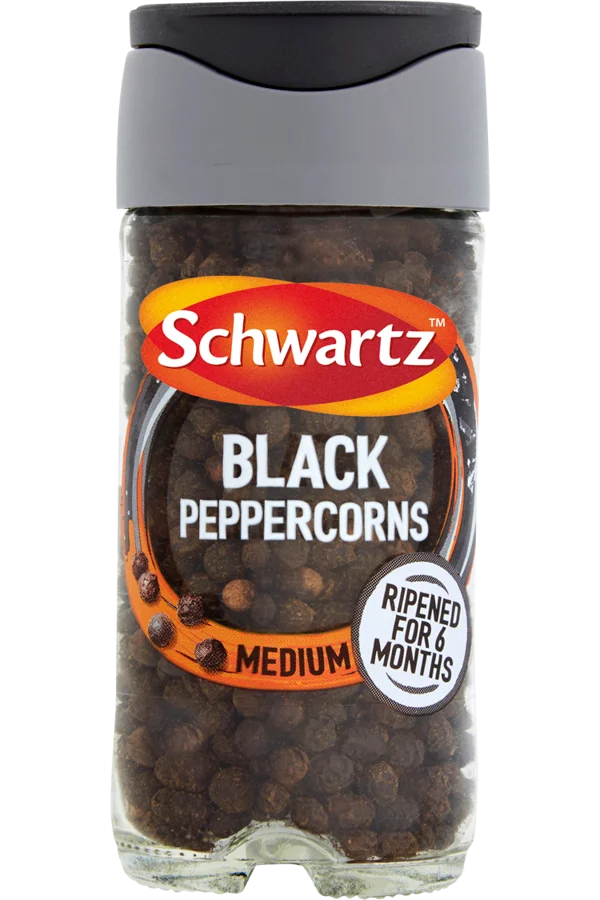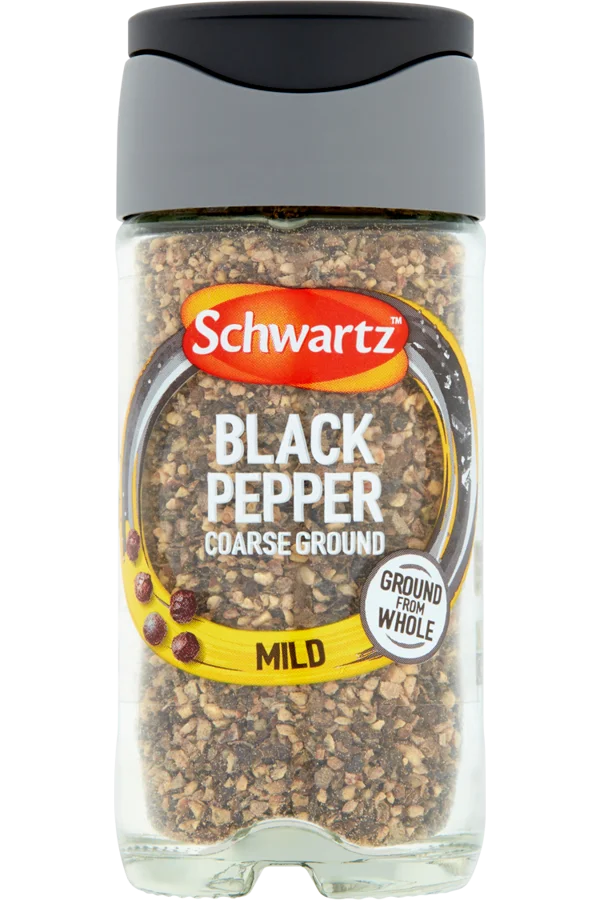Product
Similar Stories
Did You Know?
You might be accustomed to using this fiery spice solely with sea salt, but black pepper can hold its own in all manner of recipes – adding an intense twist to almost every savoury dish. Hailed as the 'King of Spices' centuries ago by Indian traders, its title was well-earned – today black pepper is the most widely used spice in the world, and particularly popular in the West.
The spice as we know it derives from the berries of the tropical Piperaceae vine, which become black when dried, and like all fruits, cultivation is tantamount to flavour. To achieve the very best taste, we source our peppercorns from expert growers around the world.
Flavour profile
The black peppercorn is a small berry picked just as it ripens from green to red: the centre is a white seed which contains more piperine and gives the pepper its heat and bite, while the black husk is the flesh of the fruit and gives the fruity, floral aromatic character.
To unleash it fully, a peppermill or pestle and mortar works best, but be advised – once crushed, the punchy, volatile oils concealed inside each corn soon evaporate. Be sure to add towards the end of cooking, or at the table – which can add a certain amount of finesse when serving. A natural companion to steak in particular, its natural flavour is enhanced by heat, and its distinct, woody aroma is instantly recognisable to many.
Cheaper ground peppers add in flavourless stalks and pin heads (unformed fruits) to bulk them out but our long term relationships with thousands of growers around the world ensures we always source the best quality there is.
Like wine grapes or coffee beans, the variety, provenance and terroir of the peppercorn creates great variety in flavour and heat and pepper is grown all around the world.
Indonesian Lampong pepper delivers a very robust heat and an intense piny taste. Dark chocolate brown Indian Tellichery peppercorns have a floral aroma and notes of cedar and cherry but less pungency and heat. A Malabar from India or Malaysian Sarawak will give a stronger flavour with a more pungent, woody liquorice aroma.
The expertise of sourcing the best peppers combined with the art of blending them to deliver perfectly balanced aromatic spicy peppers is what sets our peppers apart from the crowd.
Best in…
Packed with spiciness and heat, ground black pepper famously works very well in nearly any savoury dish. Frequently used to enliven sauces, salads, egg or cheese dishes, a sprinkling of ground black pepper and a splash of Balsamic vinegar can even bring out the sweetness of strawberries.
For a delicious vegetarian dish, lightly fry mushrooms in olive oil and butter before piling on to toasted ciabatta bread and seasoning well with ground black pepper. Finish a pasta or pizza dish with a good pinch of black pepper, or sprinkle over potato wedges with a dash of smoked paprika.
Our favourite healthy tip is to add an extra sprinkle of ground black pepper as an alternative to salt.
What’s the difference between white, black, green and pink peppers?
- Green, Red and Black peppers all come from the same berry and are harvested at different levels of ripeness & treated differently to give them a distinctive flavour and appearance.
- Black pepper is made from Piperaceae berries which are just turning red and sun-dried for 3-4 days to bring out their richer fruity notes.
- Green peppercorns are the green, unripe berry which is preserved to protect the colour. As it is less ripe, it is often a brighter, fresher flavour with less piperine heat. It is preserved by gentle air drying the berries out of the sun or using sulphur dioxide or brine.
- White pepper is essentially the seed in the centre of black pepper. The berries are picked when they are very red and after sun drying they are soaked and fermented in water for a week. The black husks are then rubbed away in the water, often by hand.
- Red & orange peppercorns are preserved in the same way as green peppercorns but use the riper orange or red berries.
- Pink peppers are not ‘real’ peppercorns but come from the Peruvian pepper tree, Schinus molle which is a relative of the cashew nut.
History
Thousands of years ago, peppercorns were highly prized by Egyptian pharaohs, and even featured in mummification rituals. By medieval times, the massive demand for pepper and other spices was a major motivation for world exploration – and conflict between countries too. Indeed, peppercorns were said to be so valued in the Middle Ages that they were actually traded as currency.
Did you know?
- Black peppercorns should be large, evenly sized and a deep rich brown colour. The darker the peppercorn the more flavour it holds.
- Pepper is still used today in Indian ceremonies as tender which is equal to cash
- Somewhat surprisingly, peppercorn is actually a fruit as it is grown on a vine, much like a grape or berry

Nutrition
Energy per 100g: 529 KCal
Protein per 100g: 13 g
Carbohydrates per 100g: 68.7 g
Fat per 100g: 22.5 g







